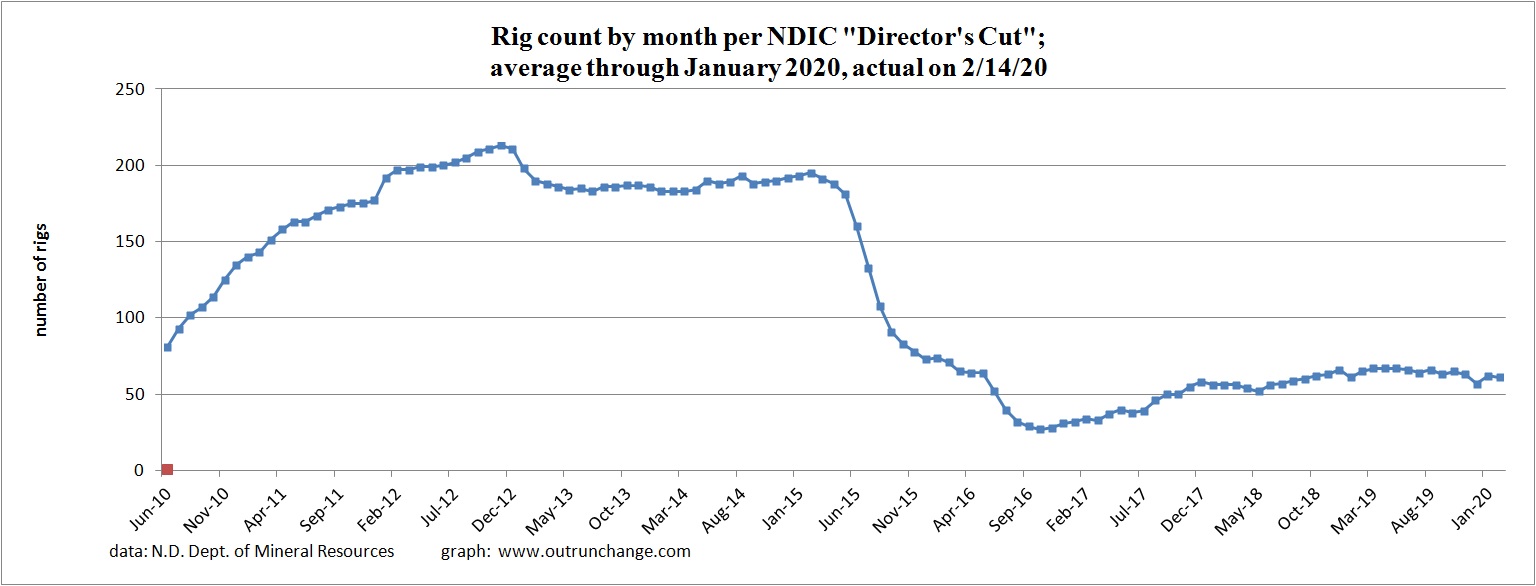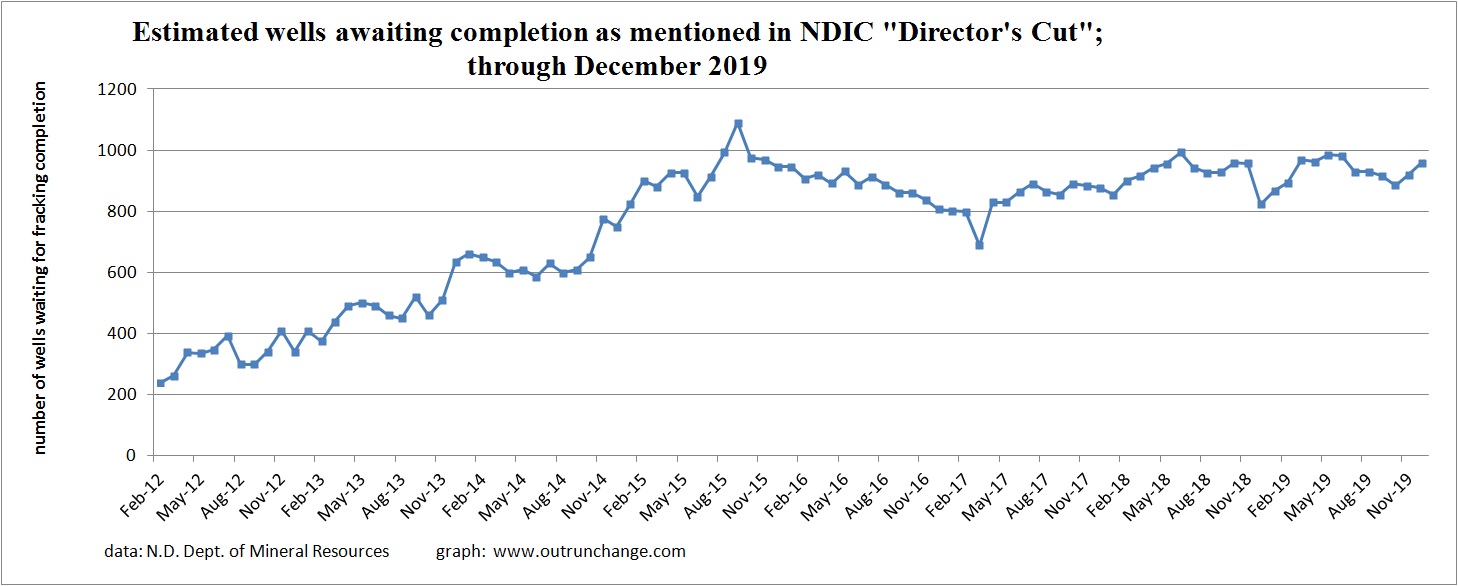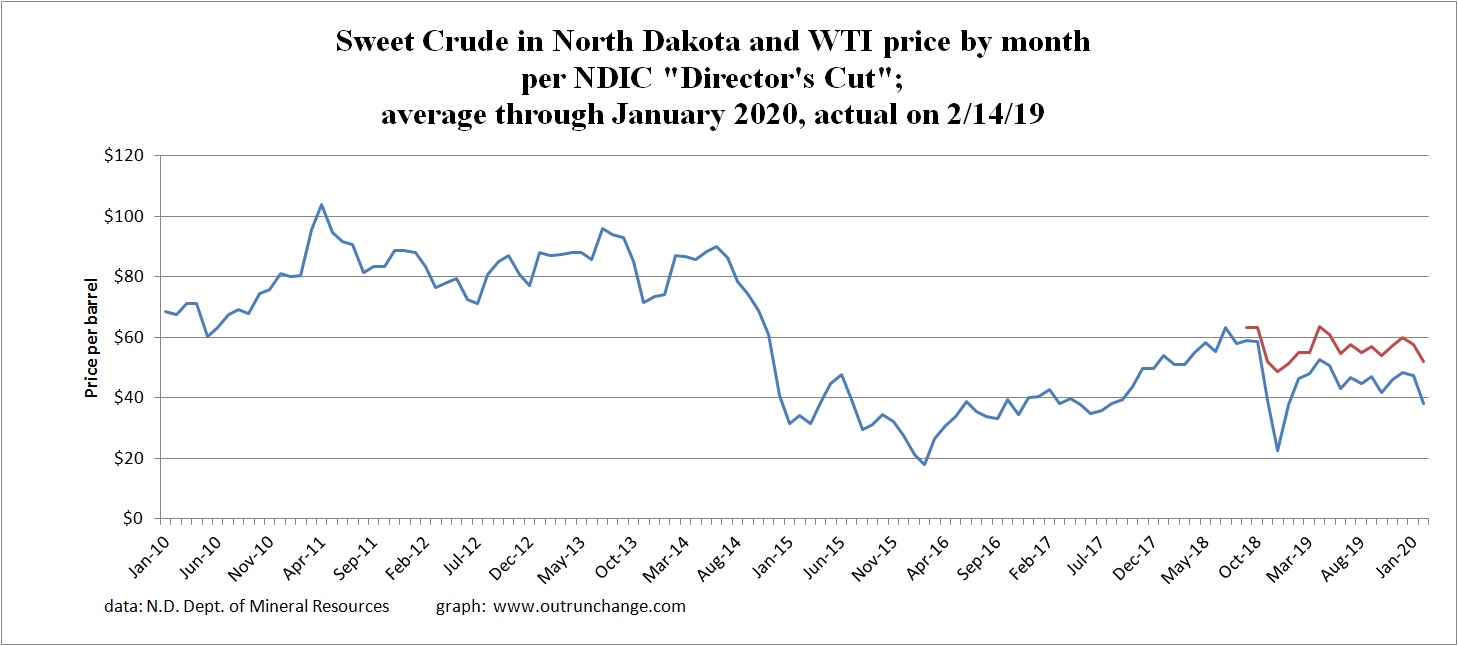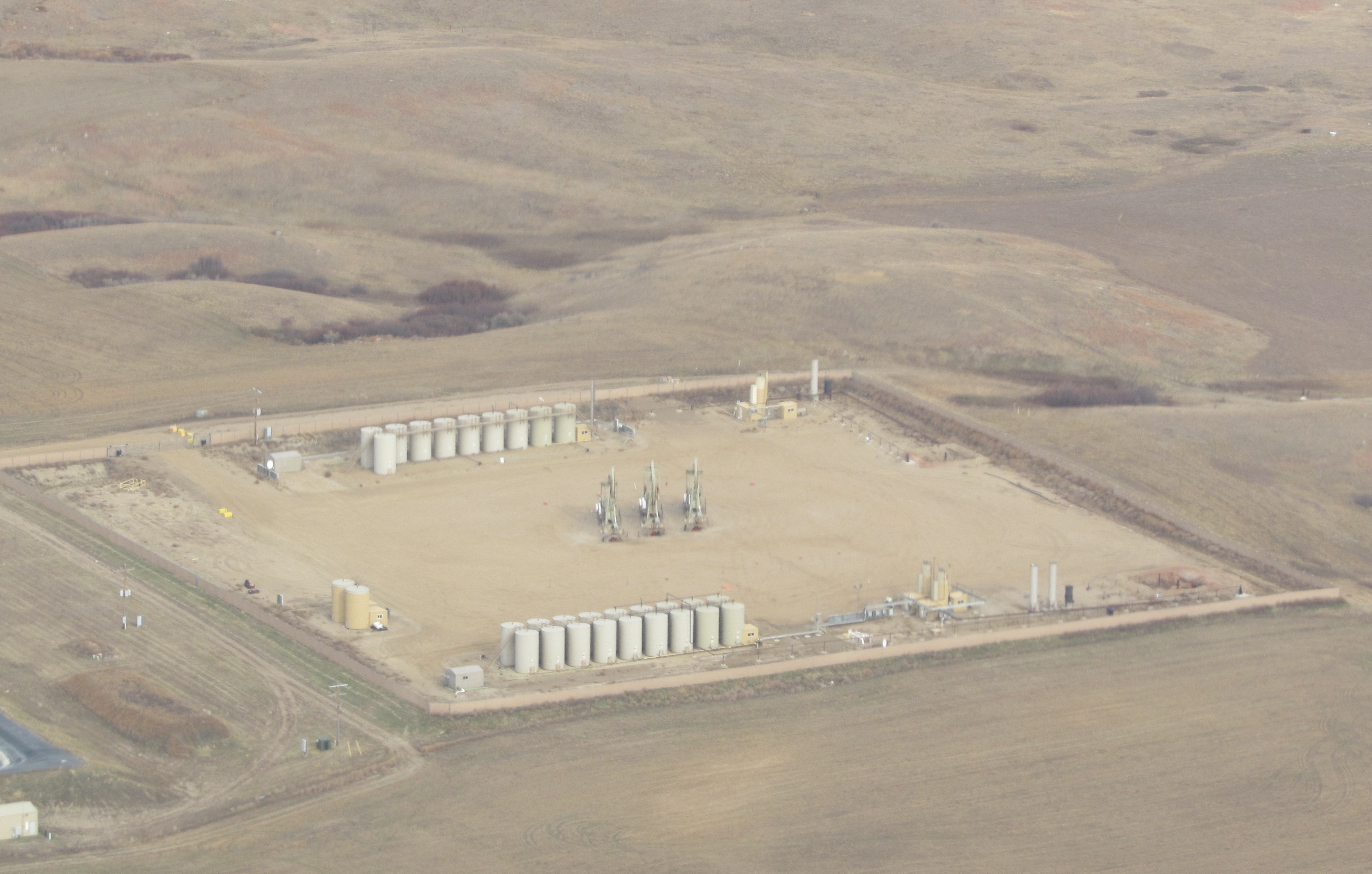
Some background data for oil in North Dakota provides insight for the production info.
Drilling rigs have become more productive in recent years. In the past, say before 2014, the number of rigs directly tied into production levels. Now, with a variety of technologies, such as multi-well pads for example, the drilling time is down so the wells per rig are up.
A far lower number of rigs is needed to keep new well production rolling.
Rig count since 2010:
Once a well is drilled, it is essentially put on the shelf. Completion is scheduled when there are fracking crews available and when the forecast price means it makes sense to bring the well into production. Part of the efficiency is to drill multiple wells on a site one after another and then later have a fracking crew complete all the wells while their equipment is on site. All of this produces a ‘fracklog’, or backlog of wells waiting completion.
This inventory is large. I am actually surprised that the fracklog is quite stable. Not as much fluctuation as I would have expected.
For perspective, there were 1,246 wells completed in 2019 and 1,154 in 2018. With the fracklog count ranging from about 850 to around 950, that fracklog is large enough for about 8 or 10 months of completions. There’s about three-fourths of a year’s worth of completed wells sitting on the shelf.
Price is obviously a major factor driving how many rigs are running and at what pace drilled-but-uncompleted (DUC) wells are taken off the shelf. More than just the current price is the forecast price for some short time in the future. Since there is a disproportionate amount of oil produced in the first few months before output levels off, seems to me the best time to complete a bunch of fracklog sites would be when the forecast for oil is high about two through about five months out.
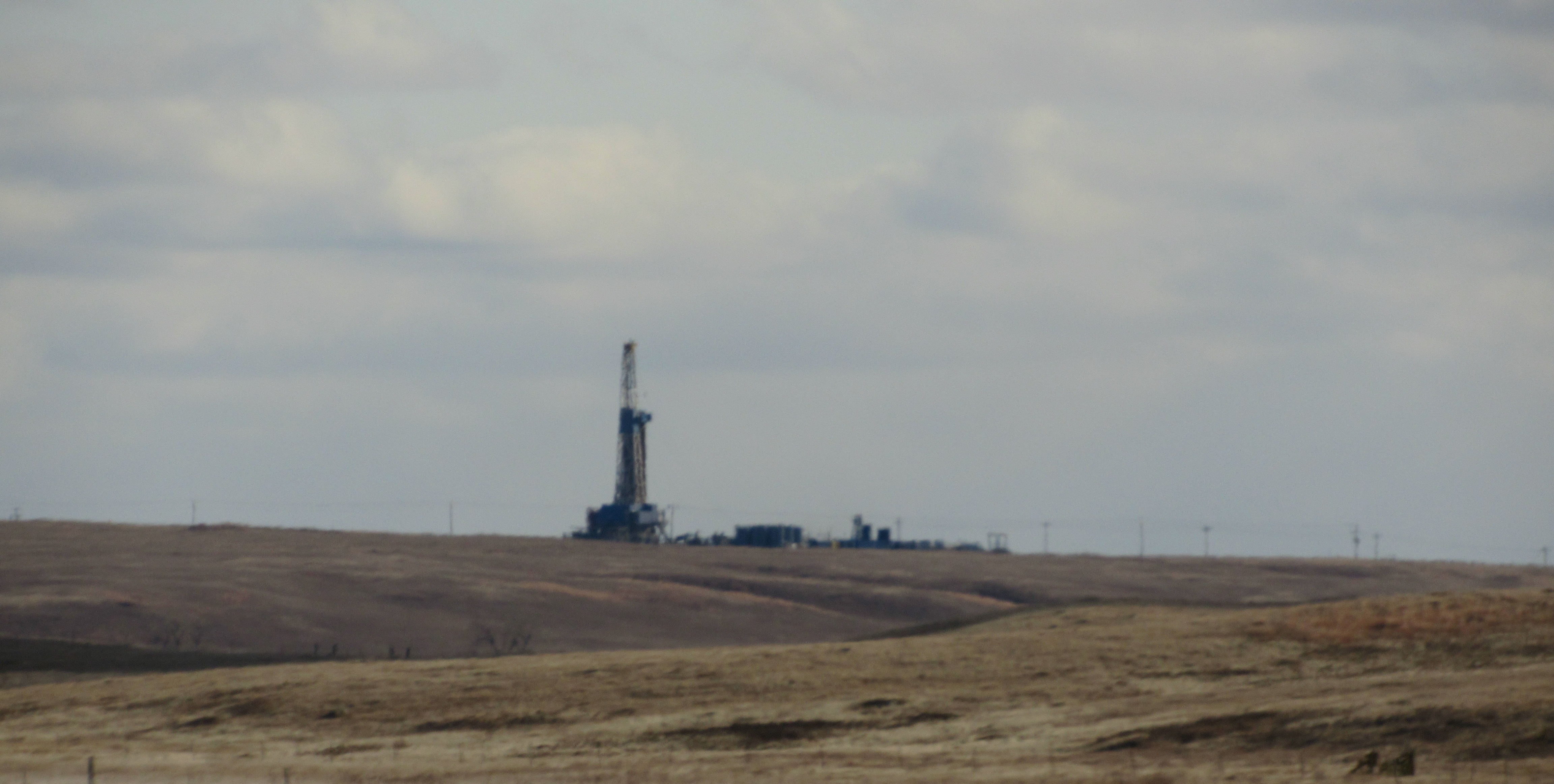
Here is the price of sweet crude in the state, as listed in the monthly “Director’s Cut” report. Starting in September 2018 the report started listing the price for West Texas Intermediate. Graph includes both prices. You can visibly see the discount for transportation costs.
